Analysis of Filecoin’s Staking Economics Building a Trustless Market and FIL Lending Ecosystem
Analyzing Filecoin's Staking Economics Trustless Market and FIL Lending EcosystemAbstract
-
The programmable layer on FIL, known as FVM, allows for the creation of trustless markets;
-
This requires a market that currently exists off-chain, bringing FIL lending onto the chain, with retail FIL holders pledging their FIL and miners borrowing FIL from a fund pool;
-
FIL lending is essentially the advance cashing out of future rewards for miners, making FIL mining more capital efficient;
-
In protocol design, there needs to be a clear trade-off between centralization, capital efficiency, and security;
-
The market for borrowing FIL decreases over time, but the introduction of stablecoins and other factors can unlock opportunities to build unique projects on these protocols;
Introduction
Launching a programmable layer on a battle-tested blockchain is often exciting. When the Bitcoin blockchain introduced Stacks (STX), a new paradigm of thinking emerged around its construction.
A similar situation occurred with the launch of FVM on Filecoin. The powerful Filecoin community can now see its vision from a completely different perspective. Many of the challenges that existed in the ecosystem are now being addressed. Creating trustless markets through programmability is a key piece of the puzzle.
Liquidity pledging on Filecoin was the first “request-for-build” released by the Protocol Labs team and received significant attention. To understand this, let’s first explore how Filecoin’s economics work.
How Filecoin Incentives Work
Unlike Ethereum validators, Filecoin does not have one-time pledging. Whenever a miner provides storage to a client, they need to pledge FIL as collateral. This collateral amount is to seal the storage blocks and keep the sealed storage blocks in the miner’s device. This structure ensures that the miner will store data for the client during the agreed-upon transaction period and be rewarded in return. Incentives are allocated through Proof of Spacetime (PoSt), where miners prove that they have stored the correct client data to receive rewards.
Miners are selected through a leader selection mechanism called DRAND. DRAND selects leaders based on initial requirements and the percentage of network raw byte power controlled by miners.
Miners must continuously increase their raw byte power (RBP) to be selected as leaders to mine blocks and receive rewards. This helps miners subsidize their storage costs.
While there are still many factors constraining the supply of these incentives, for storage providers/miners, maximizing their profits requires maximizing RBP and attracting more (and continuing past) transactions.
This creates a positive feedback loop for the Filecoin network.
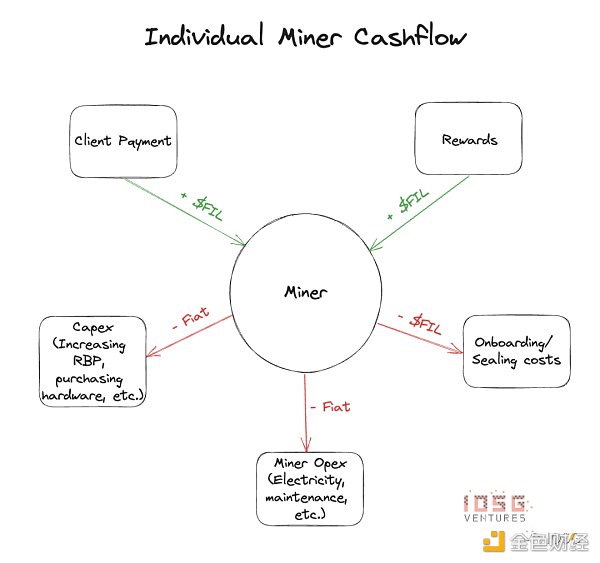
The Economics of Miners
When miners receive block rewards, these rewards are not immediately liquid. Only 25% of the rewards are liquid, while the remaining 75% of the block rewards are linearly unlocked within 180 days (approximately 6 months). This poses a problem for miners. The rewards that should serve as their operational income now become accounts payable that they have to wait to be paid, which can only be unlocked after they attract (or continue) transactions.
Let’s take a look at the balances of the top-ranking miners in the network (as of August 6, 2023).
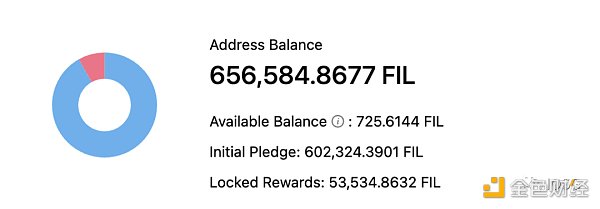
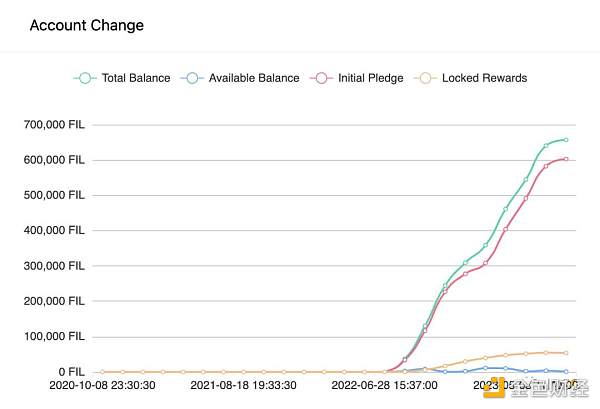
From the charts, it can be seen that miners actually have only about 1% of their rewards (or operational income) liquid. If a miner wants to do any of the following:
-
Pay operational income
-
Upgrade hardware
-
Pay maintenance costs
-
Or attract/renew transactions
They will have to borrow fiat currency or borrow FIL tokens from a third party to make up for these “delayed” payments.
Currently, many storage providers (miners) in the network rely on CeFi borrowers such as DARMA Capital and Coinlist. Since these are loan products, storage providers must go through KYC and strict auditing processes to borrow FIL tokens.
When we look at the map below, we can see that Filecoin miners are highly concentrated in the Asian region, while centralized service providers are mainly concentrated in the Western region. It is difficult for them to provide favorable FIL loans for Asian miners, and most Asian miners/storage providers do not have access to these providers.
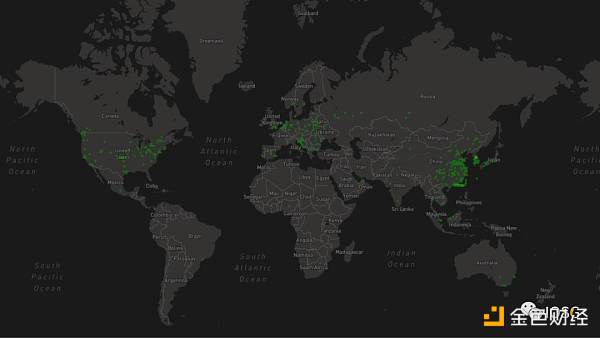
This not only hinders new miners from joining the participation but also limits the business scale of existing miners to the FIL pool size of these CeFi borrowers.
So why not borrow fiat currency from banks? Due to the volatility of FIL, this would bring additional capital management challenges for borrowing miners.
To solve this problem, a market needs to be established for FIL borrowers (miners) and lenders (who can be FIL holders).
Filecoin Collateral
With the launch of FVM, this market idea becomes a reality. FIL lenders/collateralizers can now put their FIL tokens to work, and miners can borrow from this pool (with or without permission), all managed by smart contracts.
There are already many participants in the ecosystem building this market and preparing to launch it in the coming months.
Although such a market is called a staking protocol, in terms of business nature, it is closer to a loan agreement.
The basic characteristics of such FIL loan products include:
1. The lender pledges idle FIL tokens and obtains “liquid staking” tokens.
2. Borrowers (miners) can borrow from the pool based on the collateral in the miner’s intelligent role (actors) (basically the initial pledge amount + locked rewards).
3. Borrowers make interest payments by transferring the miner’s “OwnerID” to the smart contract on a weekly or other designated time period.
4. Lenders will receive interest (deducting protocol fees) as an annualized yield (APY), which can be obtained by resetting tokens or accumulating the value of tokens.
The existing participants in the system include:
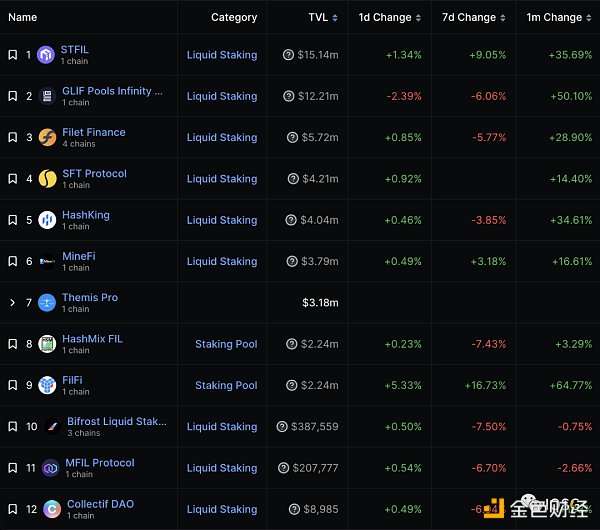
Different liquid staking protocols have different approaches in terms of borrowing:
Over-collateralization vs Under-collateralization
In the over-collateralization or under-collateralization model, the debt-to-equity ratio is always less than or equal to 100%. This means that if my miner balance is 1000 FIL, I can borrow a maximum of 1000 FIL (depending on the protocol rules). This can be easily encoded into the smart contract and has built-in default risk. It provides greater transparency and security for pledgers (lenders). Another advantage of this model is that it also allows for permissionless borrowing. In this case, the product is more like Aave/Compound rather than Lido or RocketPool.
In the under-collateralization model, the lender bears the risk, which is managed by the protocol. Risk modeling in this model is a complex mathematical calculation that cannot be embedded in a smart contract and needs to be done off-chain, sacrificing transparency. But due to leverage, the system is more capital efficient for borrowers. The more permissionless the leverage system is, the greater the risk the lender bears, which will require a very robust dynamic risk management model run by protocol developers.
The trade-offs to consider are:
-
Capital efficiency vs pledger risk
-
Capital efficiency vs transparency
-
Lender risk vs borrowers entering the system
Single pool vs Multiple pools
The protocol can also choose to build a multi-pool model where lenders can pledge FIL tokens in different pools with different risk parameters. This can achieve on-chain risk management, but liquidity will be dispersed. In a single pool model, risk will have to be managed off-chain. Overall, the trade-offs will remain the same as mentioned above.
Considerations to be made: Liquidity dispersion vs risk management transparency
Risk
In the over-collateralization model, even if miners are slashed multiple times, once the debt-to-equity ratio reaches 100%, the miner will be liquidated, and the pledger will be relatively safe.
In the under-collateralization model, if the borrower fails to prove storage blocks, they may be penalized. This is more common in Filecoin than in PoS models. This will affect the collateral value and increase the borrower’s leverage. In this model, the liquidation threshold must be set very carefully.

Filecoin miner penalty (90 days)
Comparison of market participants

So what about the entry of Ethereum pledge/lending protocols into the market?
In the Filecoin ecosystem, unlike Ethereum, the responsibilities of nodes (miners/validators/storage providers) go far beyond normal runtime. They need self-marketing to be selected as storage providers (SPs), regularly upgrade hardware to support more storage, sealing, maintenance, and retrieval of data. For SPs, Filecoin storage and mining rewards are full-time jobs.
Unlike Ethereum validators, Filecoin does not have one-time pledge. Whenever a storage provider provides storage to a client, they need to pledge a certain amount of tokens. This pledge is for sealing storage blocks and keeping the sealed storage blocks on the miner’s device. Providing storage on Filecoin is a capital-intensive process, which makes many new miners unwilling to participate in the network and also makes existing miners unwilling to stay and contribute to the network.
Due to the limited number of borrowing participants, which are only miners, establishing borrower trust will also be a resource-consuming process for newcomers in the Filecoin ecosystem.
Based solely on Filecoin’s mechanism, it is not easy to deploy Ethereum’s pledge or lending protocols on the FVM.
Protocol Economics
Is there enough FIL on the market to supply loans?
As of August 6, 2023, there are approximately 264.2 million FIL tokens in circulation, which are not committed as collateral for storage blocks or pending rewards to be released, and can be considered as the total number of FIL tokens pledged by lenders to the pool.
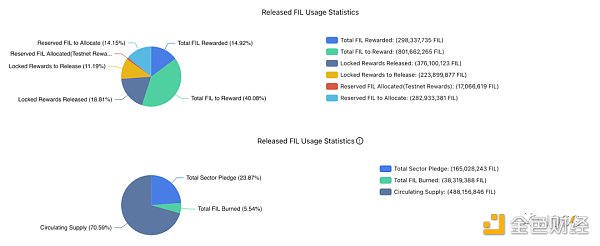
Is there enough borrowing demand?
Although FIL loans are important for miners, what are they actually borrowing? In the over-collateralization model, they are making advance payments on locked rewards, while in the under-collateralization model, they are making advance payments on future rewards.
From the chart above, it can be seen that the total locked rewards amount to approximately 223 million FIL tokens, and the supply can meet the demand. The ratio of demand to supply is almost 84%. This shows the power dynamics between the two parties, and neither party can exert pressure on the other in terms of interest rates / annual returns.
What will the future look like?
The estimate of the future FIL borrowing demand market is actually the number of FIL tokens released in the future as rewards.
Messari professionals have simulated the circulating supply of FIL for 3 years and 50 years using different scenarios.
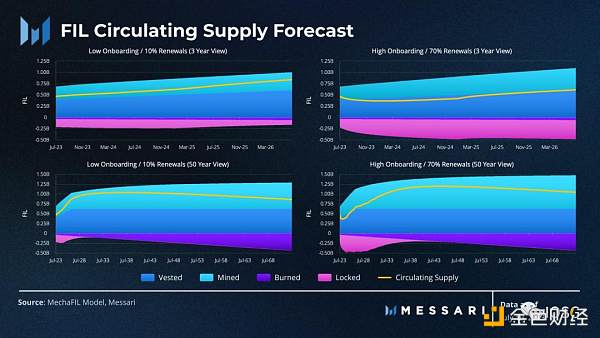
According to the chart in the upper left corner, in a conservative scenario where the amount of data added is low and only 10% of total transactions are renewed, the additional reward output in the next 3 years will be close to 100 million FIL tokens. In an aggressive scenario where the amount of data added is high and 70% of existing transactions are renewed, the additional reward output will reach approximately 200 million FIL tokens.
Therefore, it can be expected that the market size in the next 3 years will be between 100 million and 200 million FIL tokens. Calculated at the current FIL token price ($4.16 on August 6th), the total available market size (TAM) for borrowing may be between $400 million and $800 million. This can be considered as the TAM for the borrowing side of the product.
In terms of supply, in a conservative estimate, approximately 300 million FIL tokens will be generated, while in a more aggressive scenario, the circulating supply is simulated to be similar to today. Why is that? Because if more transactions are absorbed and renewed, more FIL tokens will be locked in storage blocks as collateral.
In a more aggressive scenario, demand will exceed supply, and in this competitive market, the interest charged may be higher.
If the demand for adding more data exceeds the growth of circulating supply, the price of FIL tokens will rise, thereby creating more borrowing demand in FIL tokens.
Possible future directions for this model
In different designs, it is not necessary to adopt a winner-takes-all approach. Intuitively, in the long run (based on Total Value Locked, TVL), the protocol that is built to be the safest usually wins, just like Lido in the Ethereum ecosystem. Rather than optimizing for a 2-3% return, I prefer a more secure structure, and I believe FIL token holders would also prioritize the safety of their capital over slightly higher returns.
This is considering the penalties miners have to pay for not being able to prove storage time.
From the perspective of borrowers (miners), they can borrow from different protocols to meet different purposes. If a miner already has a lot of collateral and does not need to pay operational costs through leverage, then a safer over-collateralization model will work better because it is safer. However, if I were a new miner and needed to collateralize a large number of storage blocks, I might borrow from under-collateralized pools.
By studying the above model, we can see:
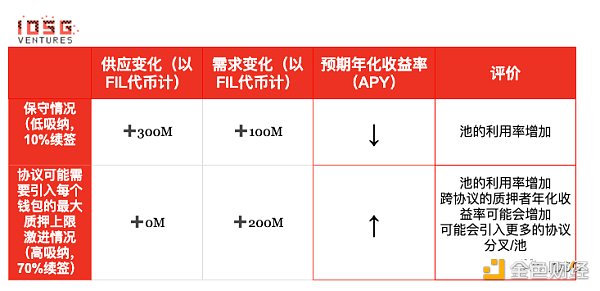
In Filecoin, collateral is crucial for bridging the supply and demand gap of FIL tokens in the ecosystem. FVM has recently been released, allowing the existence of lending markets. Although the problem is real, the release of FVM may have come too late for most FIL collateral/lending protocols, as the gradual reduction of mining rewards has made it a niche market.
However, there may be some interesting use cases on top of these collateral protocols. With the introduction of stablecoins, rewards can be seen as cash advance contracts. Similar to the pattern built by Alkimiya on Ethereum. This can inject new capital into the Filecoin ecosystem and increase the total locked value (TVL) of these protocols.
Ethereum and Filecoin have different technologies, miners, developers, and applications, thus the communities are also different. Especially for collateral, since each miner is “non-fungible”, driving demand requires business expansion, and its success is proportional to the reputation of the protocol in the community.
Collateral in Filecoin is a critical solution that needs to attract more miners into the system, invest scattered funds into operation, create greater economic incentives, attract more developers to the ecosystem, and build useful products to establish a positive feedback loop.
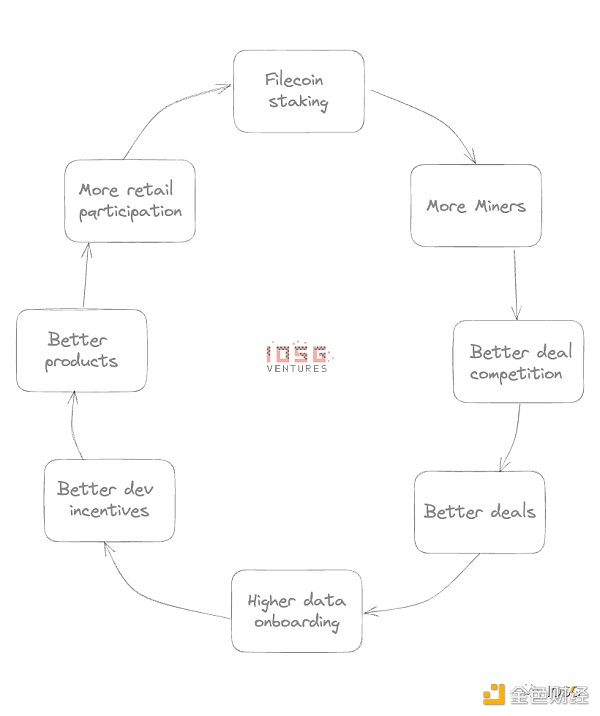
Summary
There are still many outstanding issues in the Filecoin ecosystem, but we believe that the Protocol Labs team is moving in the right direction to achieve their vision of storing human data in an efficient system.
We will continue to update Blocking; if you have any questions or suggestions, please contact us!
Was this article helpful?
93 out of 132 found this helpful
Related articles
- The first debate of the Republican primary ended. Which candidates are friendly towards encryption?
- Wu’s Weekly Selection Tornado Cash Co-founder Arrested, HashKey to Open Retail Investors Next Week, and Top 10 News (0819-0825)
- Market Analysis There will be a sharp decline before the next rise, a bear market is approaching.
- The former secretary of the Fuzhou Municipal Party Committee, who supported mining, has been sentenced to life imprisonment, but it has also left us with many questions.
- The first debate of the Republican primary ended. Which candidates are friendly to cryptocurrencies?
- Is there really market manipulation by crypto market makers?
- Market Analysis A sharp drop is expected before the next rise, and a bear market is imminent.





